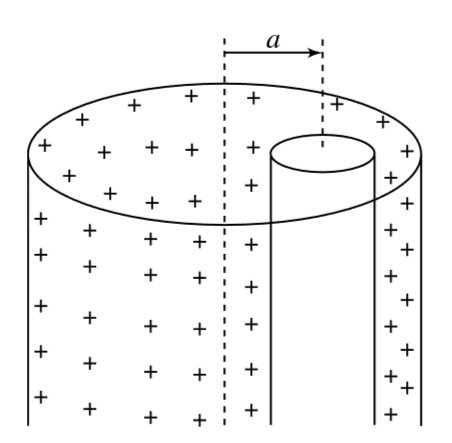Text Solution
Verified by Experts
The correct Answer is:
|
Topper's Solved these Questions
ELECTROSTATICS
ARIHANT|Exercise Level 3|59 VideosView PlaylistELECTROSTATICS
ARIHANT|Exercise Level 3|59 VideosView PlaylistELECTROMAGNETIC INDUCTION
ARIHANT|Exercise Level 3|12 VideosView PlaylistGEOMETRICAL OPTICS
ARIHANT|Exercise Level 3|9 VideosView Playlist
Similar Questions
Explore conceptually related problems
Knowledge Check
Similar Questions
Explore conceptually related problems
ARIHANT-ELECTROSTATICS-Level 2
- An infinitely long line charge is bent in U shape as shown in figure. ...
09:11
|
Play - Repeat the above problem if the semicircular part is replaced with a q...
Text Solution
|
Play - (a) There is a long uniformly charged cylinder having a volume charge ...
Text Solution
|
Playing Now - A pendulum has a bob of mass m carrying a positive charge q. Length of...
Text Solution
|
Play - A uniform non conducting ring has mass m and radius R. tow point charg...
Text Solution
|
Play - An infinitely long time charge has linear charge density lamdaC//m the...
06:08
|
Play - A charged particle is placed at the centre of two thin concentric sphe...
Text Solution
|
Play - There are two infinite slabs of charge, both of thickness d with the j...
Text Solution
|
Play - In an insulating medium (dielectric constant =1) the charge density va...
04:09
|
Play - A nonconducting sheet of large surface area and thickness d contains u...
04:42
|
Play - A charge distribution generates a radial electrif field vecE=(a)/(r^(2...
03:12
|
Play - A pyramid has four faces, all of them being equilateral triangle of si...
03:48
|
Play - A point charge is placed very close to an infinite plane. What is flux...
03:21
|
Play - Point charge q s placed at a point on the axis of a square non-conduct...
01:54
|
Play - In the figure shown sphere S(1),S(2) and S(3) have radii R,(R)/(2)and ...
06:06
|
Play - An electron (charge = e, mass = m) is projected horizontally into a un...
05:49
|
Play - A particle is projected at a speed of u = 40 m/s in vertically upward ...
05:03
|
Play - A charged particle having mass m I projected in a uniform electric fie...
08:04
|
Play - Electric field in xy plane is directed along positive y direction and ...
02:53
|
Play - Two identical positive charges are placed at x=-a and x=a. The correct...
03:14
|
Play
